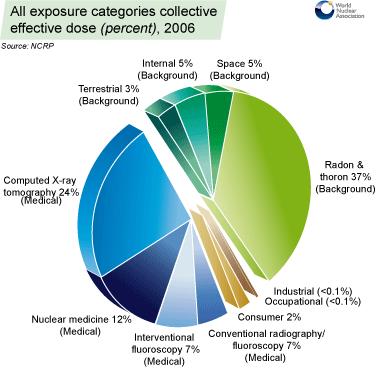The average American now receives more than five times as much radiation from medical procedures as in the early 1980s. The medical sector now accounts for almost half of an average person's dose.
The effective radiation dose for an average US citizen was 6.2 mSv during 2006, the National Council for Radiation Protection reported, up from 3.6 mSv in the early 1980s. The figures were released last week during the NCRP's annual conference.
Radiation emissions from nuclear power, nuclear research and uranium activities were included in an industrial category which accounted for 0.003 mSv per year - less than 0.1% of overall exposure.
Some 67 million CT scans were carried out in the USA during 2006, as well as 18 million other nuclear medicine procedures, according to an NCRP estimate.
In response to the rise of medical exposure to account for 48% of effective dose, the NCRP said it was working with other organizations to ensure that referrals for CT scans are based on "objective, medically relevant criteria.





_47120.jpg)
_23621.jpg)

_63865.jpg)





